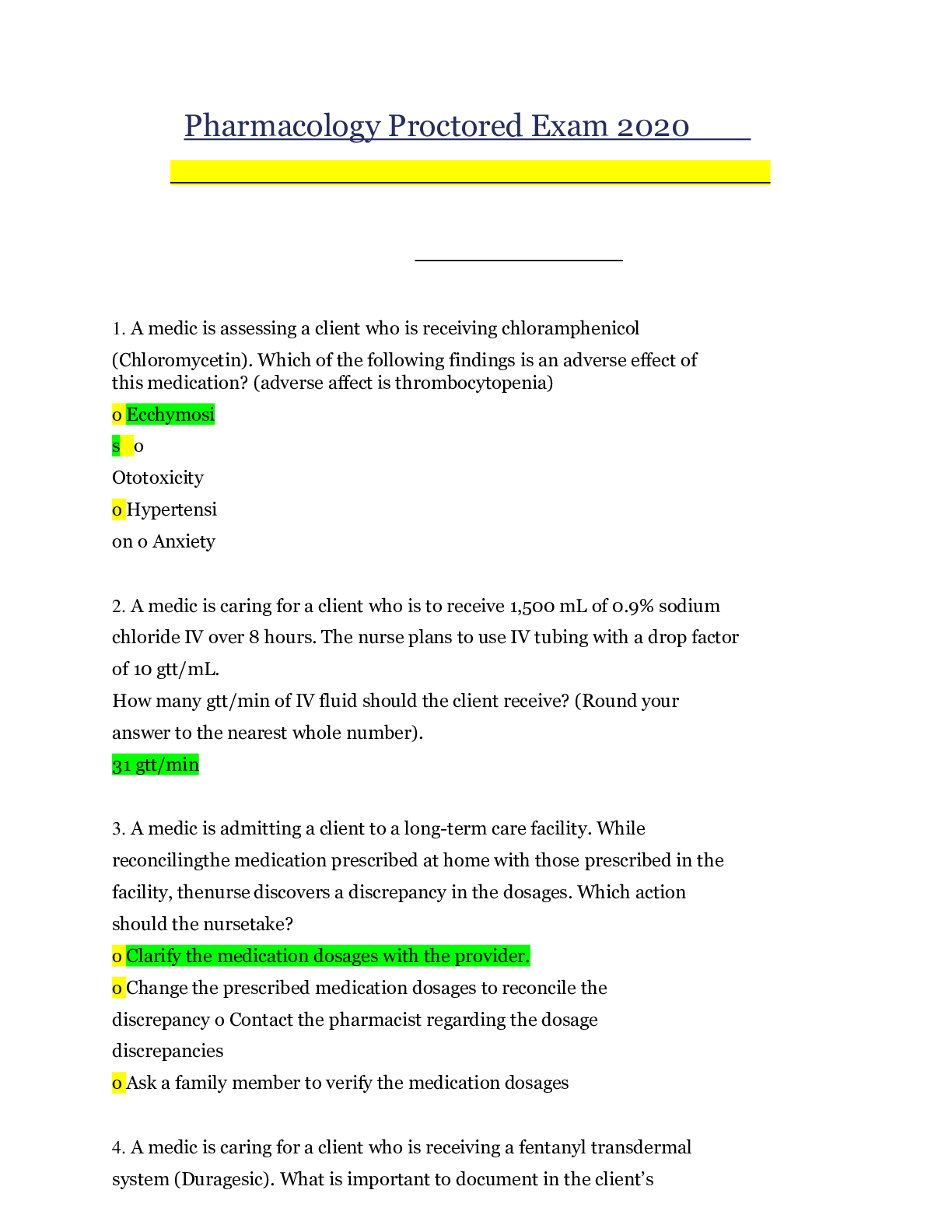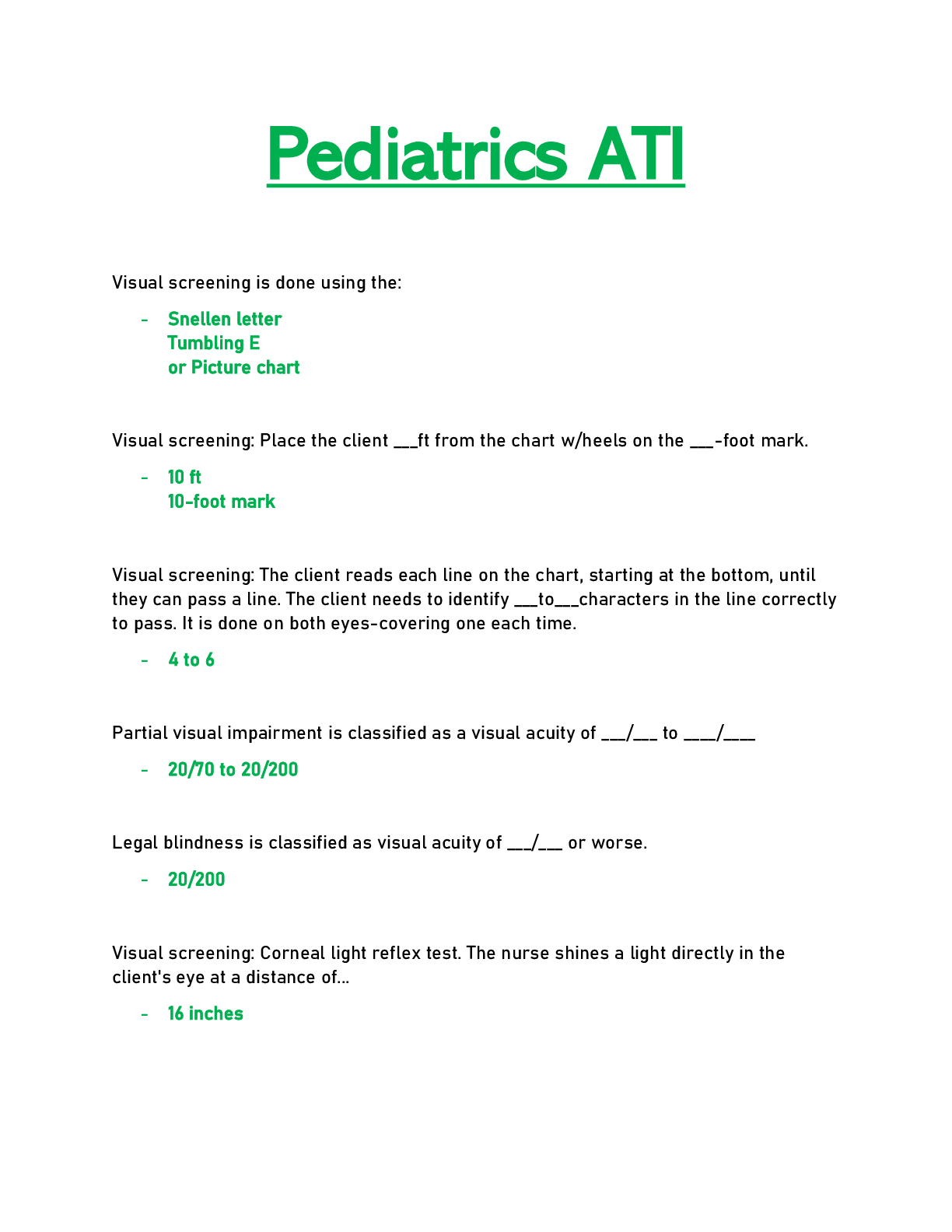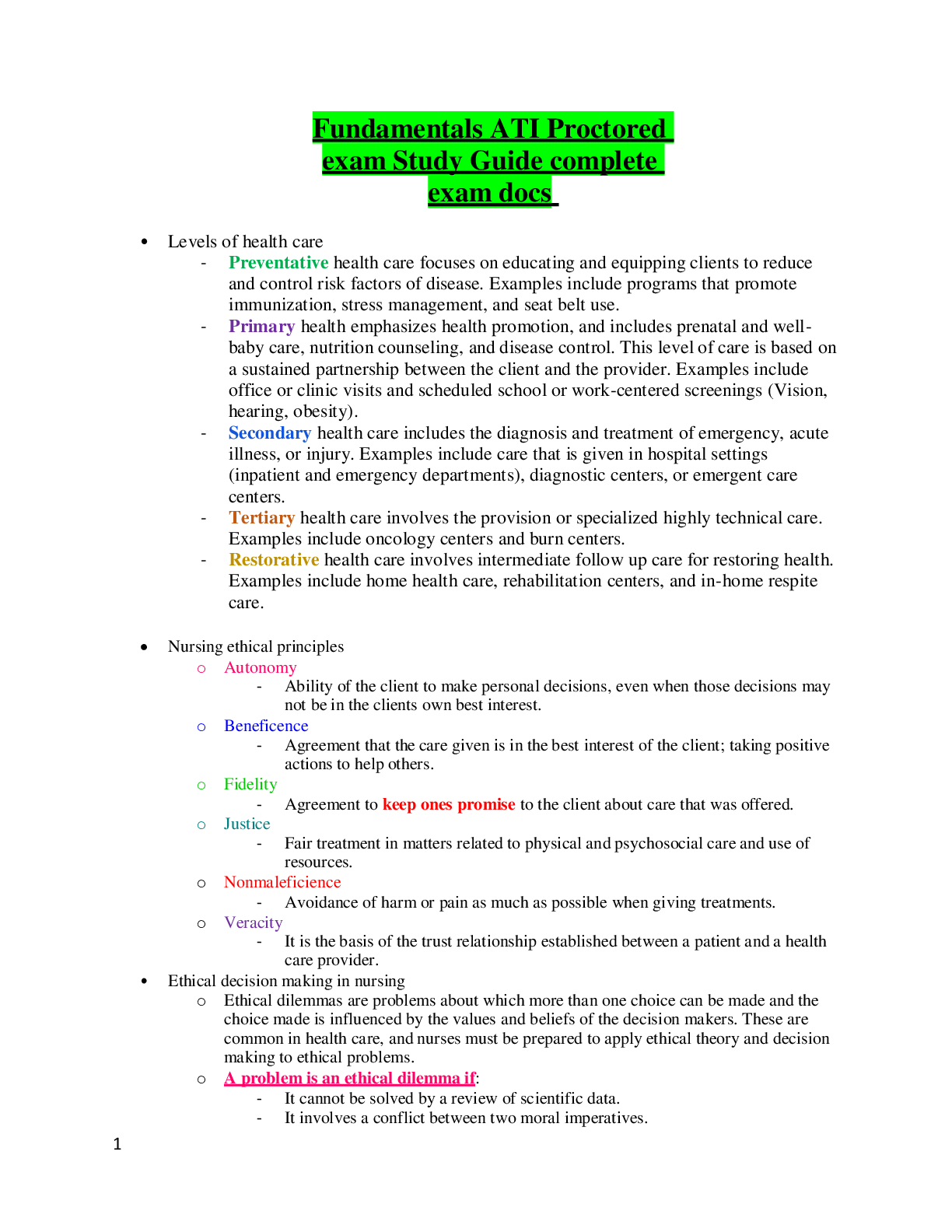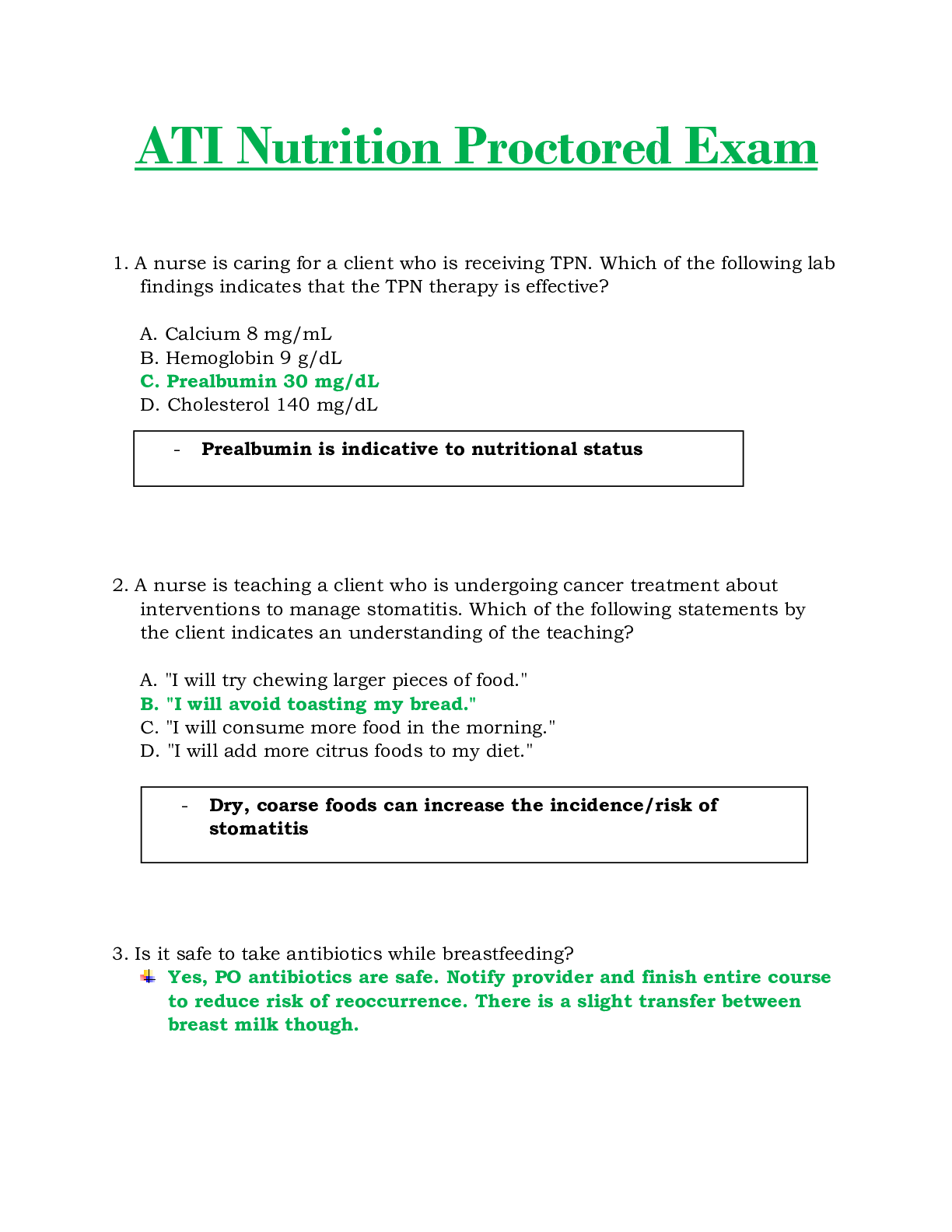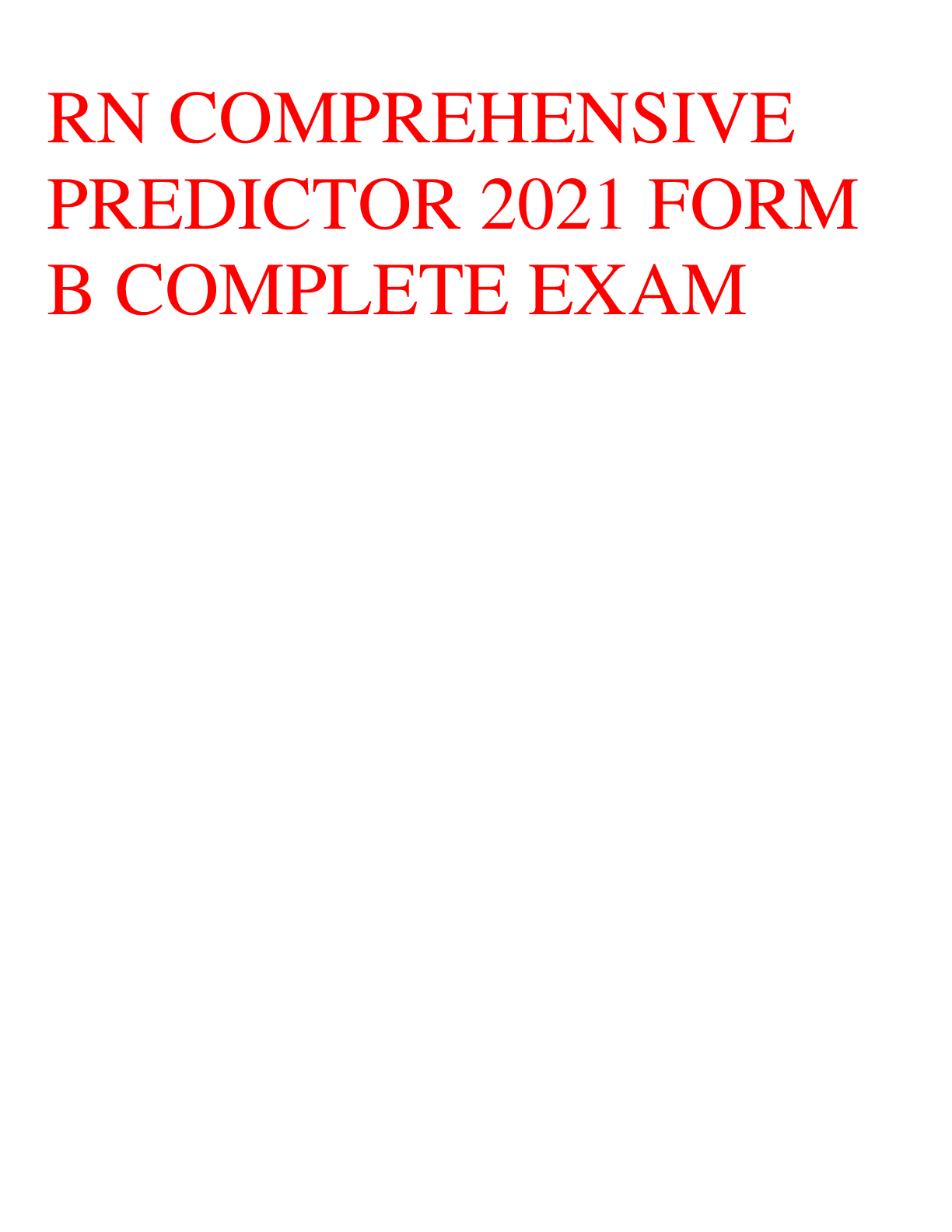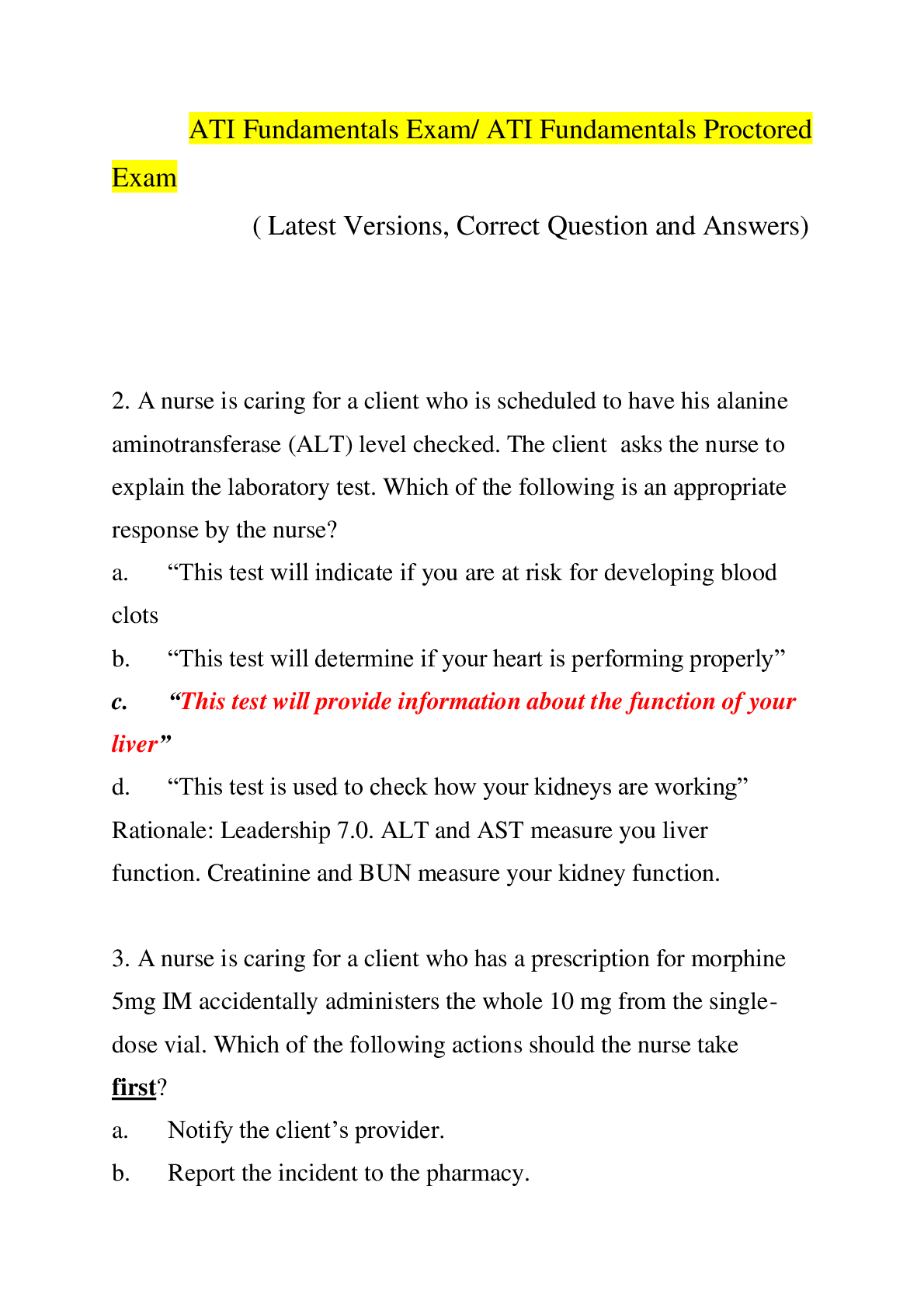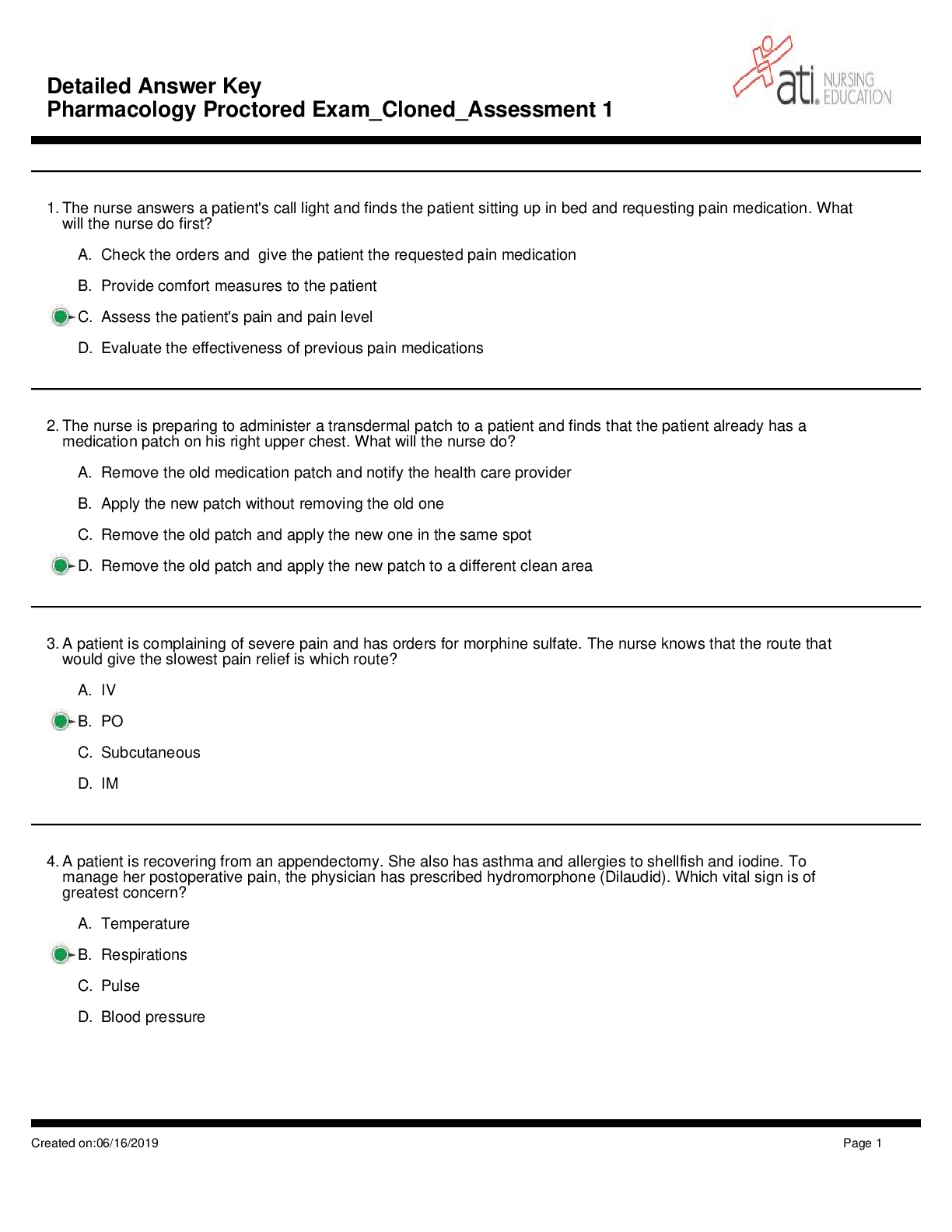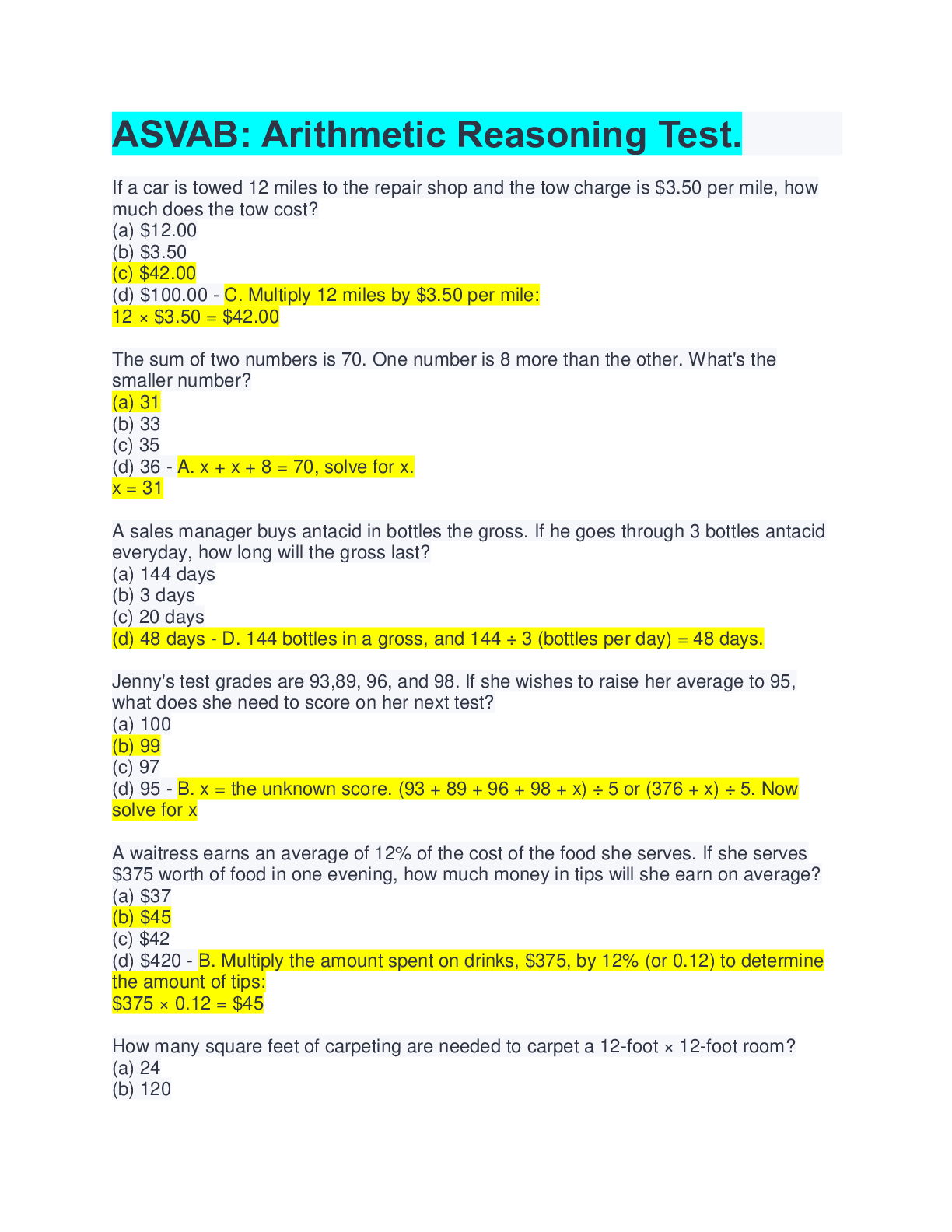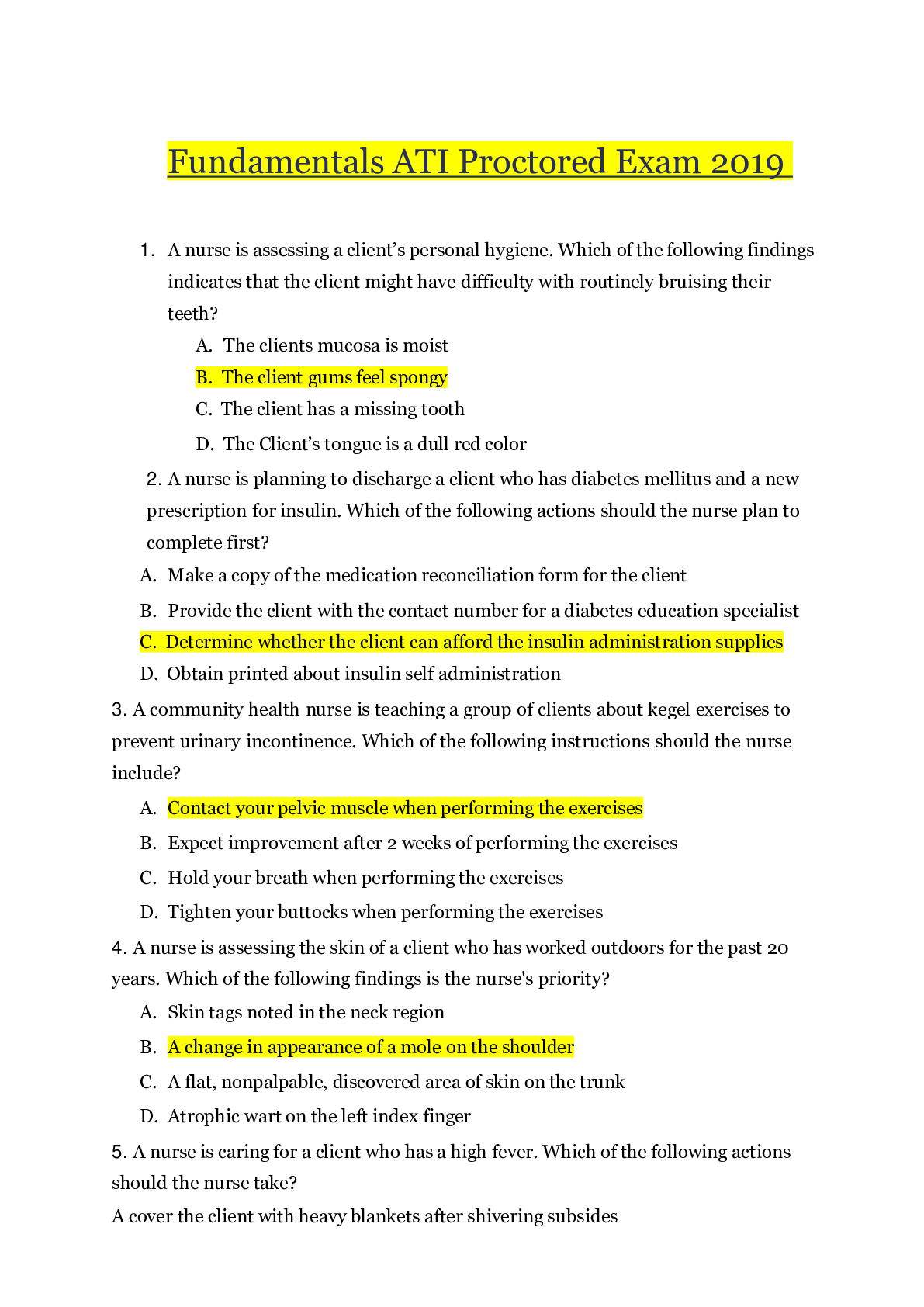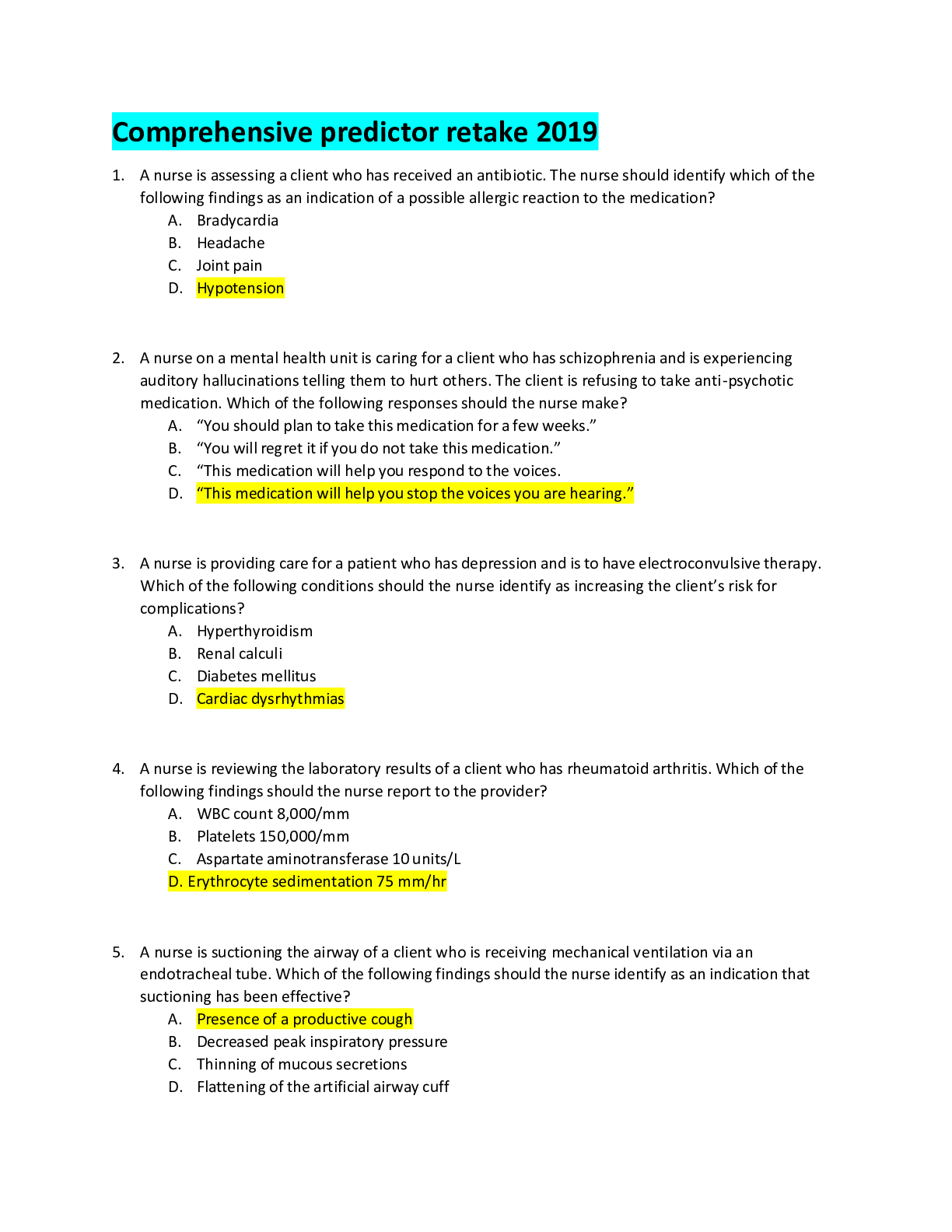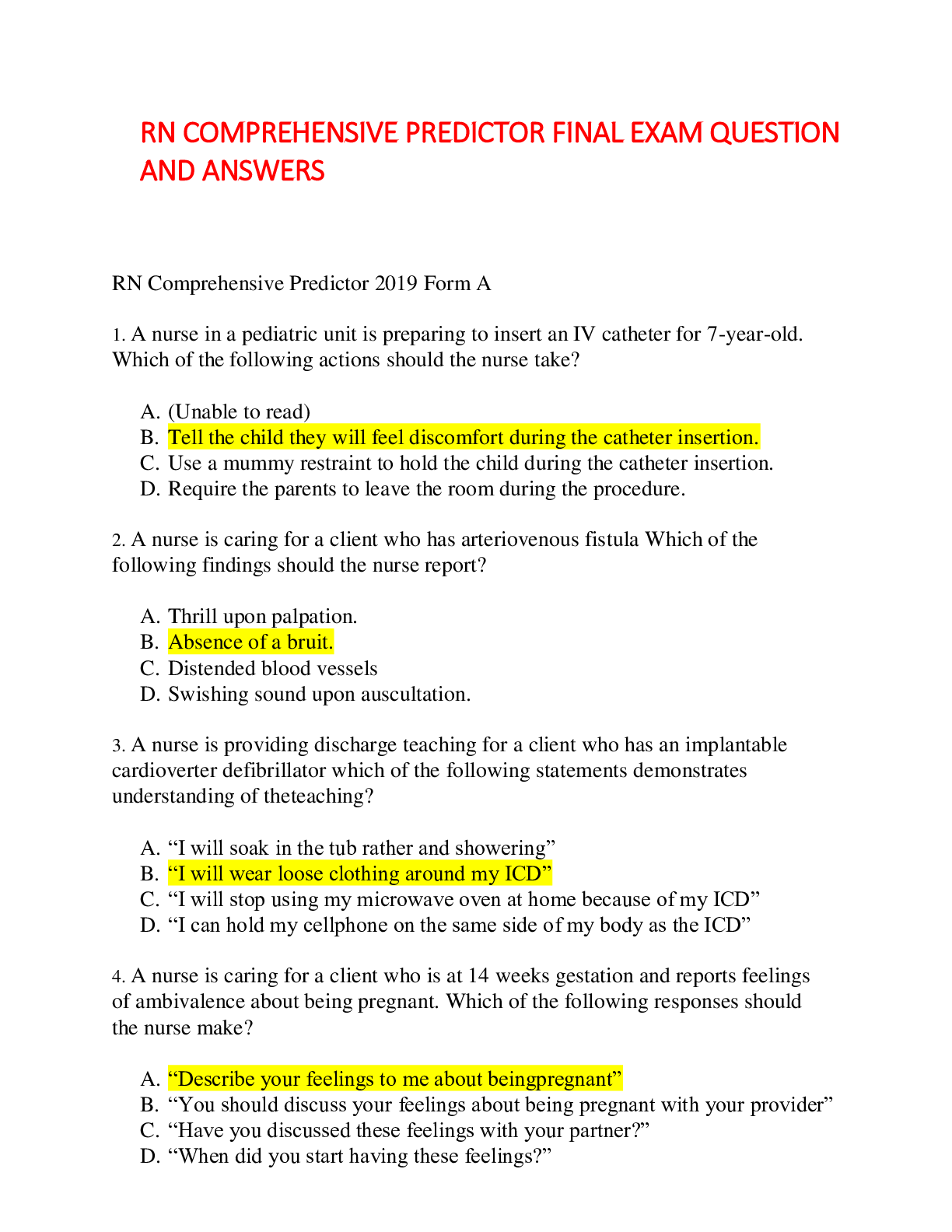*NURSING > EXAM PROCTORED > Fundamentals ATI Proctored Exam Study Guide 2020/2021 (All)
Fundamentals ATI Proctored Exam Study Guide 2020/2021
Document Content and Description Below
Fundamentals ATI Proctored Exam Study Guide 2020/2021 • Levels of health care - Preventative health care focuses on educating and equipping clients to reduce and control risk factors of disease.... Examples include programs that promote immunization, stress management, and seat belt use. - Primary health emphasizes health promotion, and includes prenatal and wellbaby care, nutrition counseling, and disease control. This level of care is based on a sustained partnership between the client and the provider. Examples include office or clinic visits and scheduled school or work-centered screenings (Vision, hearing, obesity). - Secondary health care includes the diagnosis and treatment of emergency, acute illness, or injury. Examples include care that is given in hospital settings (inpatient and emergency departments), diagnostic centers, or emergent care centers. - Tertiary health care involves the provision or specialized highly technical care. Examples include oncology centers and burn centers. - Restorative health care involves intermediate follow up care for restoring health. Examples include home health care, rehabilitation centers, and in-home respite care. Nursing ethical principles o Autonomy - Ability of the client to make personal decisions, even when those decisions may not be in the clients own best interest. o Beneficence - Agreement that the care given is in the best interest of the client; taking positive actions to help others. o Fidelity - Agreement to keep ones promise to the client about care that was offered. o Justice - Fair treatment in matters related to physical and psychosocial care and use of resources. o Nonmaleficience - Avoidance of harm or pain as much as possible when giving treatments. o Veracity - It is the basis of the trust relationship established between a patient and a health care provider. • Ethical decision making in nursing o Ethical dilemmas are problems about which more than one choice can be made and the choice made is influenced by the values and beliefs of the decision makers. These are common in health care, and nurses must be prepared to apply ethical theory and decision making to ethical problems. o A problem is an ethical dilemma if: - It cannot be solved by a review of scientific data. - It involves a conflict between two moral imperatives. - The answer will have a profound effect on the situation/client.2 The nurses basic code of ethics and principles remains constant. These basic principles include: o Advocacy - Support of the cause of the client regarding health, safety, and personal rights o Responsibility - Willingness to respect obligations and follow through on promises o Accountability - Ability to answer for one’s own actions o Confidentiality - Protection of privacy without diminishing access to quality care. Intentional torts o Assault - The conduct of one person makes another person fearful and apprehensive (Threatening to place a nasogastric tube in a client who is refusing to eat). o Battery - Intentional and wrongful physical contact with a person that involves an injury or offensive contact (restraining a client and administering an injection against his/her wishes). o False imprisonment - A person is confined or restrained against his will (Using restraints on a competent client to prevent his leaving the care facility). Unintentional torts (didn’t intend to harm patient but you did) o Negligence - A nurse fails to implement safety measures for a client who has been identified as at risk for falls. o Malpractice (Professional negligence) - A nurse administers a large dose of medication due to a calculation error. The client has a cardiac arrest and dies. Informed Consent o Responsibility of the provider Communicate purpose of procedure, and complete description of procedure in the patients primary language (use medical interpreter if needed, NOT family member). Explain Risks vs. benefits Describe other options to treat the condition. o Responsibility of the RN: Make sure provider gave the patient the above information. Ensure patient is competent to give informed consent (i.e. patient is an adult or emancipated minor, not impaired) Have patient sign consent document If pt has further questions call provider and have them come back and explain things further BEFORE they sign the form • Patient Education o Assessment: identify patient needs, learning style (auditory, visual, kinesthetic), abilities, available recources. o Planning: develop mutually agreeable goals/outcomes. o Implemmentation: DO NOT use medical jargon. Make sure materials are at a sixth grade level (or below). o Evaluation: ask patient to explain the teaching in their own words, or have the patient do a return demonstration for psychomotor learning. [Show More]
Last updated: 1 year ago
Preview 1 out of 27 pages
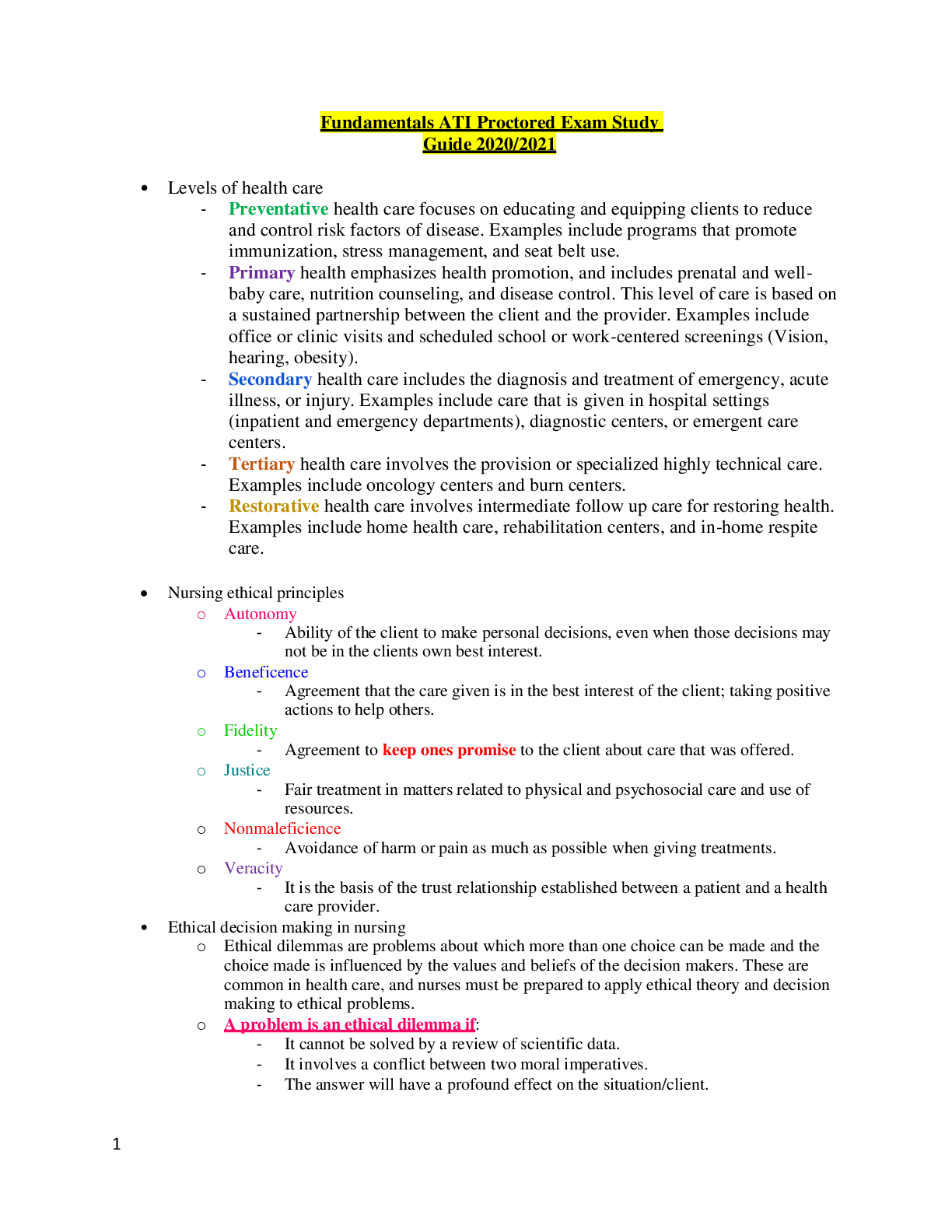
Reviews( 0 )
Document information
Connected school, study & course
About the document
Uploaded On
May 21, 2021
Number of pages
27
Written in
Additional information
This document has been written for:
Uploaded
May 21, 2021
Downloads
0
Views
48

